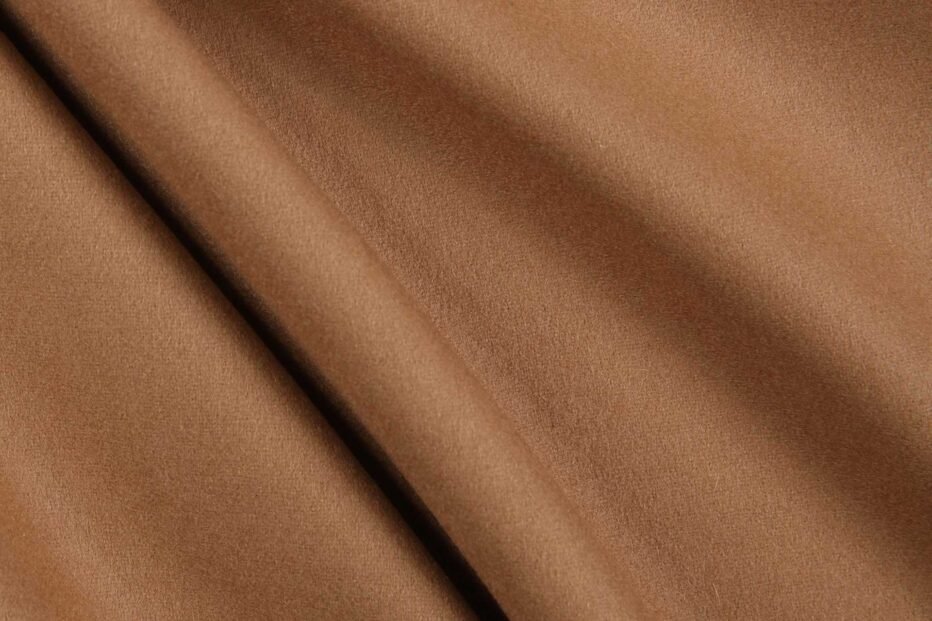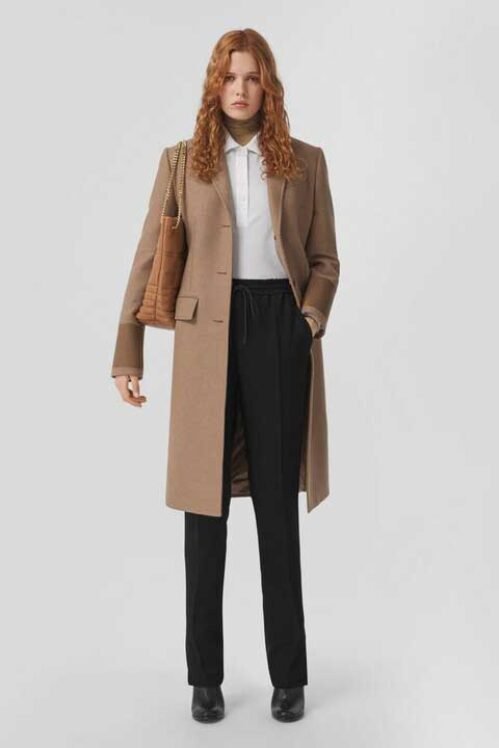Camel Wool, commonly called Camel Hair, is a category of fabric derived from camel coat. This unique fabric is usually derived from the Bactrian camel subspecies. These camels are mostly found at the Mongolian Steppes region across areas like China, Siberia and Turkey. Bactrian camels have long lustrous hair, unlike most camels with their short hair.

Description
A natural fiber worn by native desert travelers to protect themselves from heat.
A natural animal hair fiber, this specialty hair is usually a golden tan shade. The fibers consist of two parts: outer guard hair and an undercoat. Outer guard hair is straighter and coarser, while the undercoat is soft and fine. Baby camel is a suitable alternative to cashmere.
Background
Story
The Bible contains the first reference to camel hair; it mentions the material being used for tents, carpets, and cloaks. Camel hair was first used in fashion clothing by Jaeger for coats and suits.
Manufacturing
Unlike other animals that must be sheared to get their wool, Bactrian camels naturally shed their hair in the late spring or early summer. This means that camel hair is more sustainably sourced and there is less concern about mistreatment of animals during the harvesting process, as there is with other types of wood. Camels don’t need to be restrained, facing the possibility of injury, to have their wool harvested. Breeders can just wait until all the camels’ hair has fallen off. However, some breeders do still shear their camels if the hair hasn’t all fallen off, but they do not shear the area covering the camel’s humps that help protect them against diseases.

Expertises
Characteristic
- Lightweight, smooth and soft
- Lustrous
- Excellent insulating properties
- Low elasticity, less so than wool
- More sensitive to chemicals than wool
- Takes natural dyes well
- Hard to put through the felting process
Where is Camel Hair Made
Mongolia is the largest exporter of camel hair in the world. Many Bactrian camel breeders in Mongolia are nomadic and are descendants from a long line of Bactrian camel breeders. Many of these breeders follow the age-old techniques of harvesting the camel wool that their ancestors from long ago followed, however some breeders have adopted more modern methods to harvest the hair from a camel.
Uses for Camel Hair
Camel hair is an excellent insulator. Its thermostatic properties work to keep camels warm during frigid and snowy winters in the mountains, while also helping them stay cool in the hot desert sun. Fabrics made from camel hair share these same properties, making it a versatile fabric with a wide range of uses. In fact, it is such a versatile and valuable material that as far back as the Bible you will find mention of camel hair fabric being used to make tents, cloaks, and carpets.
Camel Hair vs Wool
Both Cashmere and camel hair are incredibly soft and warm. Cashmere garments are very lightweight and have a high moisture content. This allows them to offer varying levels of insulate based on the climate and humidity. Camel wool has thermostatic properties to keep camels cooler in hot deserts and warmer in the cold and snowy mountains. Garments made from camel hair share these same characteristics.
Social
12k followers
30k likes
Youtube
22k subscribers
8k followers
Have a project in mind?
If you have a great idea, reach out to me. Whether it is a small or big project, I will listen first and get back to you with a plan.

